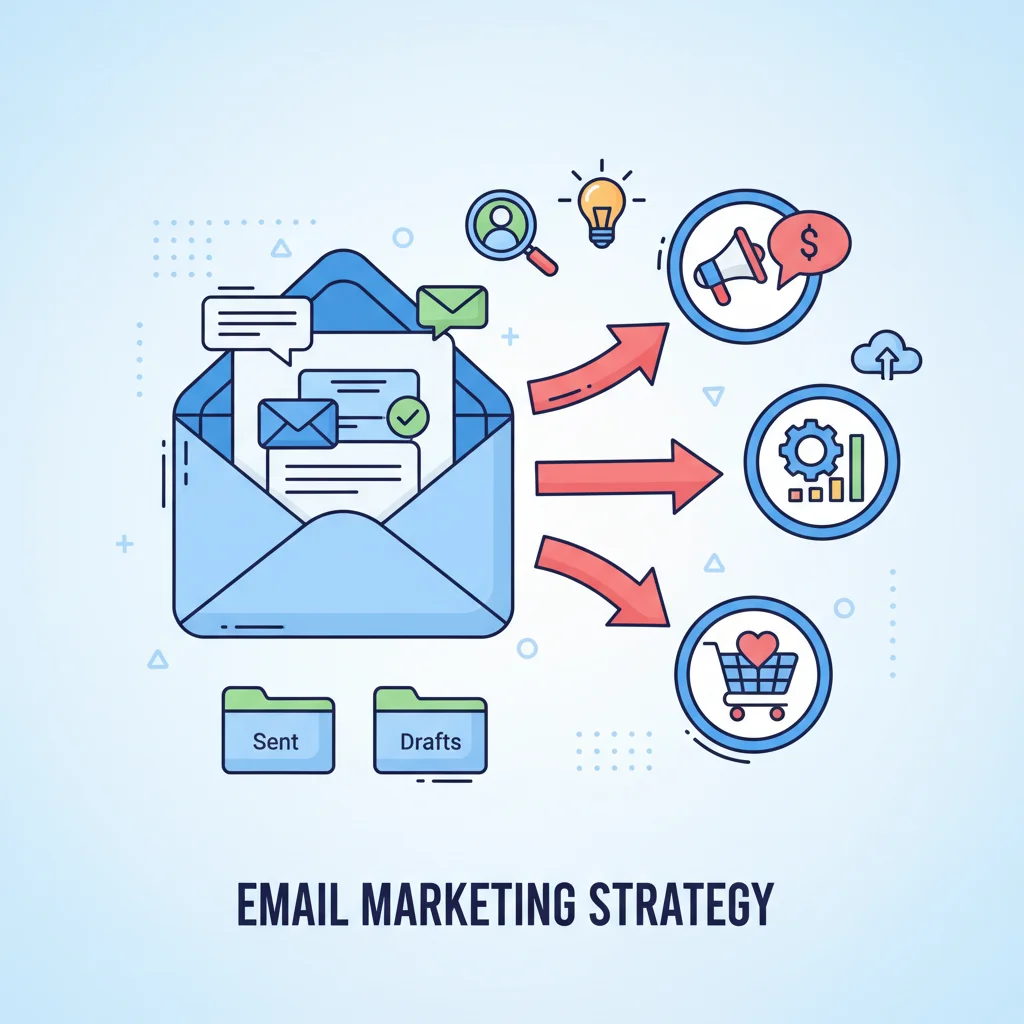Now Reading: Mastering Email Marketing Success Metrics: A Complete Guide for Marketers
-
01
Mastering Email Marketing Success Metrics: A Complete Guide for Marketers
Mastering Email Marketing Success Metrics: A Complete Guide for Marketers

Email marketing remains one of the most powerful tools for building relationships, driving sales, and nurturing leads. But how do you know if your campaigns are truly working? The answer lies in tracking email marketing success metrics. By measuring the right KPIs, you gain the clarity needed to optimize every send, refine your messaging, and ultimately achieve your business goals.
In this comprehensive guide, you’ll discover exactly how to measure the success of your email marketing campaigns, which metrics matter most, and how to turn insights into action for continuous growth.
Key Takeaways
How Do I Measure the Success of My Email Marketing Campaigns?
- Track key metrics like deliverability, open rate, click-through rate, conversion rate, and unsubscribe rate to gauge campaign performance.
- Benchmark your results against industry standards and your own past campaigns for meaningful insights.
- Analyze and optimize: Use data to refine subject lines, content, calls-to-action, and list quality for better outcomes.
- Monitor list health by watching bounce rates, spam complaints, and list growth to ensure long-term success.
- Focus on ROI: Always connect your email metrics back to business objectives and revenue impact.
Why Measuring Email Marketing Success Matters
Every email marketer wants results—more opens, more clicks, more conversions. But without a clear measurement strategy, you’re flying blind. Tracking email marketing success metrics gives you:
- A data-driven view of what’s working (and what’s not)
- The ability to optimize campaigns for better engagement and ROI
- Insights to justify budget and resources for email marketing
- Early warning signs of issues like deliverability problems or list fatigue
Let’s break down the most important metrics, how to track them, and what they reveal about your email marketing performance.
Useful Articles:
The Essential Email Marketing Metrics You Should Track
Deliverability Rate
Deliverability rate measures the percentage of emails that actually reach your recipients’ inboxes. If your emails aren’t delivered, nothing else matters. A high deliverability rate (ideally above 95%) signals a healthy list and good sender reputation. Low deliverability can indicate spam filter issues, poor list hygiene, or technical problems.
How to improve deliverability:
- Regularly clean your email list to remove invalid or inactive addresses
- Use double opt-in to confirm new subscribers
- Avoid spammy language and ensure you’re sending to engaged users
Open Rate
Open rate is the percentage of delivered emails that are actually opened by recipients. It’s a direct reflection of your subject lines, sender name, and timing. A typical benchmark is 20–22%, but this varies by industry.
Boost your open rates by:
- Crafting compelling, personalized subject lines
- Using a familiar sender name
- Testing send times for optimal engagement
Click-Through Rate (CTR)
CTR measures the percentage of recipients who clicked on a link in your email. This is a key indicator of how engaging and relevant your content is. Average CTRs range from 2–5%, depending on your industry.
Increase CTR by:
- Including clear, prominent calls-to-action (CTAs)
- Designing mobile-friendly, visually appealing emails
- Segmenting your audience for more targeted messaging
Conversion Rate
Conversion rate tracks how many recipients took your desired action—like making a purchase, signing up for a webinar, or downloading a resource—after clicking through from your email. This is the ultimate measure of campaign effectiveness.
Ways to improve conversion rate:
- Align email content closely with your landing page
- Personalize offers based on user behavior or preferences
- A/B test CTAs, layouts, and offers for optimal results
Unsubscribe Rate
Unsubscribe rate is the percentage of recipients who opt out of your emails. While some churn is normal, a spike can signal issues with content relevance or frequency.
Keep unsubscribe rates low by:
- Delivering consistent value in every email
- Allowing subscribers to manage preferences (e.g., email frequency)
- Avoiding overly aggressive sales tactics
Bounce Rate
Bounce rate measures the percentage of emails that couldn’t be delivered. There are two types:
- Hard bounces: Permanent delivery failures (invalid addresses)
- Soft bounces: Temporary issues (full inbox, server problems)
A high bounce rate can hurt your sender reputation and deliverability.
Reduce bounce rates by:
- Verifying email addresses at sign-up
- Removing hard bounces from your list immediately
- Monitoring and addressing soft bounces regularly
Spam Complaint Rate
This metric tracks the percentage of recipients who mark your email as spam. High complaint rates can damage your sender reputation and cause future emails to be filtered out.
Minimize spam complaints by:
- Only emailing people who have opted in
- Setting clear expectations at sign-up
- Making it easy to unsubscribe
List Growth Rate
List growth rate measures how quickly your email list is expanding. Healthy growth signals effective lead generation, while stagnation or decline may point to issues with your acquisition strategy or content.
Boost list growth by:
- Offering valuable lead magnets (e.g., ebooks, discounts)
- Promoting sign-ups across your website and social media
- Encouraging sharing and forwarding of your emails
Email Sharing/Forwarding Rate
This metric tracks how often recipients share or forward your emails. High rates indicate content that resonates and encourages organic reach.
Encourage sharing by:
- Including social sharing buttons
- Creating content worth spreading (e.g., tips, exclusive offers)
- Incentivizing referrals
Return on Investment (ROI)
ROI measures the overall financial impact of your email marketing. Calculate it by comparing the revenue generated from your campaigns to the total cost of running them. Email marketing often boasts an impressive ROI, sometimes as high as $44 for every $1 spent.
Maximize ROI by:
- Continuously optimizing campaigns based on data
- Focusing on high-value segments and offers
- Automating workflows to save time and increase relevance
How to Benchmark and Analyze Your Email Metrics
Step 1: Chart Past Campaigns
Review your past 3–12 months of email campaigns and record key metrics: deliverability, open rate, CTR, conversion rate, unsubscribe rate, and spam complaints.
Step 2: Establish Averages
Calculate the average for each metric. This becomes your baseline for future comparisons.
Step 3: Compare to Industry Benchmarks
Research typical metrics for your industry. For example, e-commerce open rates average 34%, while finance hovers around 26%. Use these benchmarks to set realistic goals.
Step 4: Identify Trends and Outliers
Look for patterns over time. Are open rates declining? Did a specific campaign outperform others? Investigate the causes—both positive and negative.
Step 5: Take Action and Optimize
Use your findings to refine subject lines, segment lists, adjust frequency, and test new content formats. Continuous improvement is key to long-term success.
Useful Articles:
Advanced Metrics for Deeper Insights
As your email marketing matures, consider tracking these advanced metrics:
- Click-to-Open Rate (CTOR): The percentage of unique clicks divided by unique opens. This shows how compelling your content is to those who actually open your emails.
- Subscriber Lifetime Value (LTV): The total revenue a subscriber generates over their time on your list. Helps guide investment in acquisition and retention.
- Event Lag: Measures the time between email send and recipient action, revealing when your audience is most likely to engage.
- Device and Email Client Usage: Understanding where and how your emails are read can inform design and testing priorities.
Best Practices for Tracking and Improving Email Marketing Success Metrics
- Set clear goals for each campaign (e.g., drive sales, increase sign-ups, nurture leads)
- Segment your audience for more relevant messaging and higher engagement
- A/B test subject lines, content, and CTAs to continually improve performance
- Automate reporting with your email service provider’s analytics tools
- Regularly clean your list to maintain high deliverability and engagement
- Stay compliant with email regulations (e.g., CAN-SPAM, GDPR) to protect your sender reputation
Tracking email marketing success metrics is the foundation for smarter, more effective campaigns. By measuring, analyzing, and optimizing the right KPIs, you’ll unlock better engagement, higher conversions, and a stronger return on investment. Start tracking your success metrics today and watch your email marketing results soar.





















